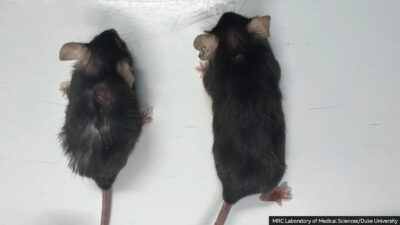Providers at Tufts Medical Center in Boston, MA had to call for backup when a man’s wound failed to heal despite antibiotics and numerous surgical efforts to remove the dead tissue. The doctors got some help from an unlikely source: maggots.
Using maggot therapy may sound unfathomable by today’s medical standards, but it was once widely used to cure patients of non-healing wounds, including abrasions to the skin and soft tissue.
The maggots eat away at the dead skin while removing debris that can cause infections.
Working with Maggots
According to the National Center for Biotechnology Information, maggot therapy is defined as the intentional application of live, “medical-grade” fly larvae to wounds in order to effect debridement, disinfection, and ultimately wound healing.
Researchers say maggot therapy has been making a comeback in recent years as patients look for alternatives to traditional medicine and antibiotics become less effective. The NCBI also notes that more people are now living with chronic conditions that make it harder for their wounds to heal, including diabetes.
The therapy was first created by orthopedic surgeon William Baer. He discovered the treatment after applying maggots to the wounds he suffered during WWI.
Over a thousand American, Canadian, and European surgeons started using maggots in their practice within the next five years. However, its popularity fell off during the 1940s when antibiotics were first introduced. By the 1950s, it was rarely used and almost never reported.
The treatment is getting renewed attention amid growing antimicrobial resistance. Researchers found that patients aren’t nearly as averse to the idea of maggot therapy as one might suspect. It has shown to be effective in treating a variety of non-healing wounds. They are also much less expensive compared to other forms of treatment, usually going for around $80 – $100, not including the cost of labor and quality control.
Medicinal maggots are regulated by the Food and Drug Administration. Records show that around 24 laboratories across over 30 countries currently supply medical maggots to providers.
One patient recently experienced the benefits of maggot therapy at Tufts.
Dr. Frederick Gale, a surgeon at Tufts, recounted the harrowing experience to the press. “It was a huge team effort,” he said.
Gale explained that the wound was “too severe” for the patient to undergo more surgery. Antibiotics also failed to heal the wound. Records show the patient was ready to be discharged to hospice care, but doctors couldn’t let him go until his wound had healed.
“He really challenged us to find a solution,” said Lisa Baxter, clinical director of the inpatient and ostomy team at Tufts.
With nowhere else to turn, the doctors finally decided to go with maggot therapy.
Gale consulted with Dr. Ron Sherman, a specialist in maggot therapy. Around 3,000 slimy crawlers were brought in for the occasion. All the maggots were sterile, according to the team.
They were applied using a “caged dressing”, which helps keep them in place while allowing them to breathe, so they don’t crawl all over the patient’s skin. Once the maggots eat the dead skin cells, they move onto the next area, making them easy to remove.
This marks the second time the procedure has been performed at Tufts. “And the first case was nothing like the magnitude of this,” Gale said.
Along with ridding the wound of dead skin, the maggots also “stimulate granulation tissue”, which is filled with new blood cells, to help accelerate the healing process.
“That’s part of why we needed the maggots,” he said. “They go where the food is. They’re having a great time taking care of it.”
While the therapy was successful, doctors agree that patients shouldn’t go around the woods looking for maggots when they have a wound that won’t heal.
It is only safe to use sterilized maggots. The effort was only successful thanks to the team at Tufts, who spent hours cleaning and attending to the patient before and after the procedure.
“What could I say?” the patient told a local news outlet after making it out of the hospital. “I was the one who pushed them into finding another solution, so I can’t say no. The fact that they were thrilled with my progress meant whatever they were seeing was going away and I’m getting better. That was probably about the happiest time I had in the hospital.”
Gale said the maggots did what modern healthcare couldn’t.
“This is a time when those things were not the right answer,” he said. “We consulted the maggots, and the maggots saved his life.”
















